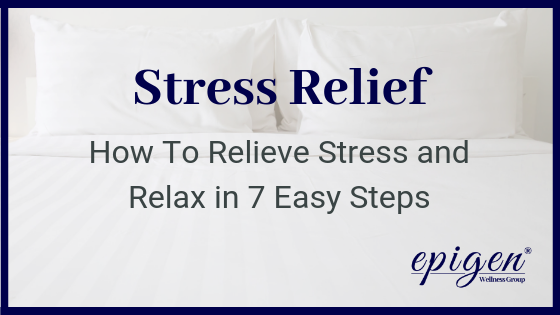Sometimes the stress piles on high, so it’s increasingly difficult to relieve stress through conventional stress management tips. In other words, sometimes the tips don’t work because there’s just too much stress and it won’t budge. A racing mind and a body that feels shaky and out of control are signs of this. The good news is that relaxation exercises can help!
Relieve stress, day or night, with the following 7-step process. This may seem like a lot, but stick with us, because we have the perfect solution at the end. Sometimes this 7-step process helps the very first time. However, it may take a few weeks for the body and mind to get used to it. Either way, it’s a valuable tool to encourage deep, quality relaxation.
1. Location, location, location
First, choose a comfortable place that feels safe so your brain doesn’t feel the need to resist getting relaxed. It could be at home, at work, or even outside or in a parked car if the weather is agreeable.
2. Create the environment
Second, make sure the relaxation place is dark by drawing curtains, turning off lights, or wearing an eye cover. It should also be quiet, so if noises cannot be avoided, headphones may be helpful.
3. Loosen up
Third, do some stretching exercises. Light, calming stretching exercises are great to loosen tight muscles, increase comfort, and begin to release excess tension in the body.
4. Close the eye
Fourth, close your eyes. This helps to limit distractions so the brain can focus on getting relaxed instead of anything else that may be happening.
5. Breathe
Fifth, take some deep, relaxing breaths. Focus on the act of breathing, both during deep breathing and natural breathing. You can even try some breathing techniques like this if you want more than just deep breaths.
6. Relax muscles
Sixth, focus on all the muscles of the body, one at a time, from the top of the head to the bottom of the feet. Focus on relaxing each muscle. When you do this, the muscles will loosen in response to the thoughts.
7. Visualize
Seventh, visualize a deeply relaxed version of yourself, both physically and mentally.
This process is completed when the body and mind are so relaxed that sitting becomes difficult. That is when it is time to enjoy the feeling, or become more alert by focusing on surroundings and opening the eyes. If the mind and body become stressed again, simply repeat the relaxation process.
If you struggle to relax enough to fall asleep at night? This is for you!
Need a little extra help getting deeply relaxed? We’ll send you a guided relaxation exercise FREE!
This will walk you through each step and encourage deep relaxation, especially for those who struggle to get relaxed.

